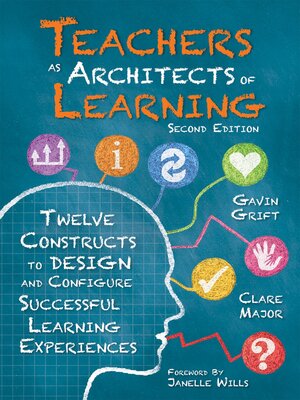Teachers as Architects of Learning
ebook ∣ Twelve Constructs to Design and Configure Successful Learning Experiences (An instructional design guide for student-centered teaching practices in 21st century classrooms)
By Gavin Grift

Sign up to save your library
With an OverDrive account, you can save your favorite libraries for at-a-glance information about availability. Find out more about OverDrive accounts.
Find this title in Libby, the library reading app by OverDrive.



Search for a digital library with this title
Title found at these libraries:
| Library Name | Distance |
|---|---|
| Loading... |
Craft a personal blueprint for teaching that ensures student learning stands as the foundation of your classroom. Drawing on research from the field, reflections from teachers, and the authors' professional experience, Teachers as Architects of Learning guides educators in building their wisdom around the art of teaching. Find new and better ways to plan, implement, discuss, question, model, and more.
Use this resource to help students apply their existing knowledge most purposefully to new learning opportunities:
Contents:
Acknowledgments
Table of Contents
About the Authors
Foreword
Chapter 1: Introduction
Chapter 2: Questioning
Chapter 3: Self-Assessment: Reflection and Feedback
Chapter 4: Observing and Listening
Chapter 5: Explicit Instruction
Chapter 6: Modeling and Exemplars
Chapter 7: Support and Safety
Chapter 8: Time
Chapter 9: Expectation
Chapter 10: Lifeworlds
Chapter 11: Desire
Chapter 12: Resources
Chapter 13: Existing Knowledge
Appendix
References and Resources
Index







